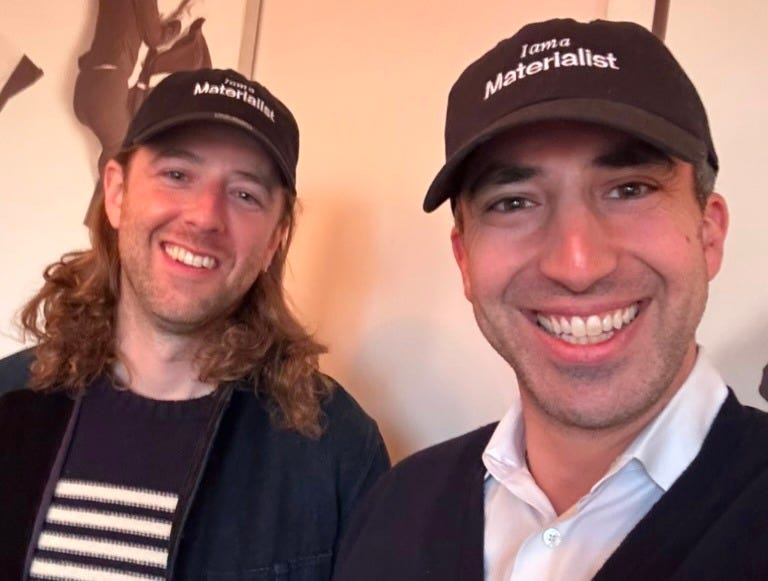Podcast Episode Details
Back to Podcast Episodes
The Materialist : Colin Keane Lynch
This week on The Materialist, I had the joy of sitting down with Colin Keane Lynch, the artist and jeweler behind Keane. His work has been part of At Present’s assortment for years, but this conversation offered the time to slow down, zoom out, and ask how meaning is made—through hands, history, and a thousand degrees of heat.
Colin’s pieces are hand-formed from glass in his Brooklyn Navy Yard studio—each one made by him, start to finish. But as we talked, it became clear that the true through-line in his work isn’t just craftsmanship or aesthetics—it’s curiosity. The kind that spans childhoods spent among zookeepers and chemists, travels to glassblowing ateliers in Italy, and hours upon hours of studio time where intention meets improvisation.
We talked about how value is created—economically, emotionally, and artistically. And about how hard it is to define what’s “worth it” in a world where perception can feel like quicksand.
From Zoo Animals to Murano Glass
Colin grew up in St. Louis. His father was a zookeeper at the St. Louis Zoo, and his mother ran her family’s industrial coatings business—formulating everything from Steinway piano lacquers to experimental nail polish for dentists. (“Don’t ask,” he said, which of course only made me want to ask more.) His parents also ran an artisan import business sourcing from Central Mexico and Italy, where their connections eventually led Colin to spend a summer in Murano learning to blow glass from some of the world’s masters—at just 15.
That summer was a turning point, not just creatively but conceptually. He described the experience as a kind of apprenticeship-in-motion, where the discipline of making met the thrill of learning without limits. It was like being sent to basketball camp and finding out your coach is Michael Jordan.
RISD, Raves, and the Real Work of Art School
Colin later studied in the glass program at RISD—not a technical program, but a conceptual one. Students weren’t asked to replicate historical forms; they were asked to investigate identity, systems, form, and meaning through material. The prompts were abstract (“Make something about identity”), and the materials were sometimes unconventional: crushed brick, spun sugar, yarn. He learned how to think about materials not as tools, but as collaborators.
It was, he said, intimidating. And invaluable.
From Menswear to Meaning
After graduating into the 2008 financial crisis, Colin pivoted briefly into menswear—joining the team at Odin, one of the first high-concept men’s boutiques in New York. There, he helped launch their in-house apparel line and quickly became immersed in the design and production side of fashion. That experience taught him not just how to source and manufacture, but how to prototype, iterate, and communicate ideas to customers.
And more importantly, it gave him a retail laboratory. He could make jewelry—small-batch, experimental pieces—and see in real time what resonated. The first piece he ever sold? A simple glass vial necklace with gold leaf suspended inside. Not precious, but poetic.
On Glass, Value, and What's Really Rare
We spent time in this conversation probing a recurring theme: how value gets ascribed. Colin sees parallels between precious jewelry and high-end clothing—when it’s done well and with intention, the materials and the story matter. But he’s wary of value that’s based solely on scarcity or branding. We talked about diamonds. We talked about perception. We talked about the ancient Egyptians, who once considered glass more valuable than gold beca
Published on 4 months, 2 weeks ago